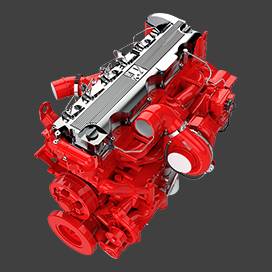Aug . 05, 2024 23:57 Back to list
Performance Enhancements for Drum Brakes in High-Performance Automotive Applications and Racing Scenarios
Performance of Drum Brakes An In-Depth Analysis
Drum brakes, while sometimes overshadowed by their more modern counterparts—disc brakes—still hold a significant place in the automotive industry, especially in certain applications where their unique characteristics shine. Understanding the performance of drum brakes involves evaluating various factors such as design, mechanics, advantages, and limitations.
At their core, drum brakes consist of a cylindrical drum that rotates with the wheel and brake shoes housed within. When a driver applies the brakes, hydraulic pressure forces the brake shoes outward against the inner surface of the drum, creating friction that slows down the vehicle. This design has several benefits that contribute to the performance of drum brakes.
Performance of Drum Brakes An In-Depth Analysis
Moreover, drum brakes are more efficient at self-energizing. When the brakes are applied, the rotation of the drum can actually assist in pressing the brake shoes harder against the drum surface. This self-energizing effect can improve braking performance, especially at low speeds, where heavy braking is often unnecessary. For many applications, this means effective stopping power without the need for excessive hydraulic pressure, thus resulting in a reduced load on the vehicle's braking system.
performance drum brakes

However, despite their strengths, drum brakes also have limitations. One significant drawback is their tendency to overheat during prolonged use, particularly under heavy braking conditions like those experienced in mountain driving or during racing. When drum brakes overheat, their performance can diminish, leading to brake fade—a phenomenon where the brakes become less effective due to the reduction of friction. In contrast, disc brakes dissipate heat more effectively, making them a preferred choice for high-performance vehicles or situations requiring sustained braking.
Maintenance is another area where drum brakes show both pros and cons. They generally require less frequent adjustment than disc brakes due to their enclosed design, which helps to protect them from dirt and debris. However, when maintenance is needed, such as replacing brake shoes or re-lining the drum, it can be more labor-intensive compared to the relatively straightforward process of changing disc brake pads.
In the realm of performance vehicles, the trend has clearly shifted towards disc brakes due to their superior heat dissipation and overall stopping power at high speeds. However, drum brakes still find a place in applications where weight, cost, and simplicity are prioritized over peak performance. In fact, many modern vehicles retain drum brakes in rear applications, where they are sufficient for providing necessary stopping power and are paired with disc brakes in the front for enhanced performance.
In conclusion, while drum brakes may not dominate the high-performance segments of the automotive market, they still offer reliable performance, cost-effectiveness, and simplicity in design. Their unique self-energizing ability and high friction potential make them suitable for various applications. Understanding the balance of their strengths and limitations can help consumers and enthusiasts make informed choices regarding their vehicle’s braking system, ensuring safety and performance tailored to their specific driving needs.
-
ROR Web Development: Build Fast, Scalable, Secure Apps
NewsAug.17,2025
-
Scania Brake Drums: OEM Quality for Optimal Safety & Durability
NewsAug.16,2025
-
R.V.I: Advanced Remote Visual Inspection for Precision
NewsAug.15,2025
-
Discover HYUNDA: Innovative Vehicles, Equipment & Solutions
NewsAug.14,2025
-
R.V.I: Unlock Advanced Insights & Real-time Performance
NewsAug.13,2025
-
Kamaz Brake Drum: Durable & Reliable for Heavy Duty Trucks
NewsAug.12,2025
